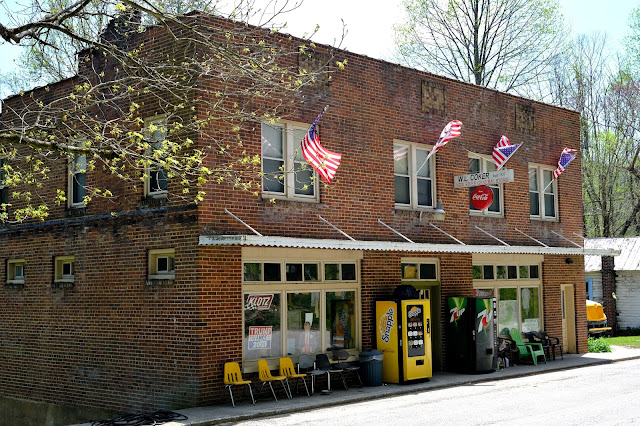Old entrance to our farm on Sourwood Lane. I didn't spot this as a keeper until other people told me how much they like it. Now it hangs in our living room!
Blog note: I wrote most of this post last night on my iPad, then accidentally deleted it. Bummer!!!
Editing film is different from editing digital files, but neither is more difficult than the other. I've been doing both for a long time -- 35 years with film, and 23 years with digital.
Editing film is fairly straightforward, although it requires more physical activity. I shot mostly color transparency (slide) film in 35mm, 120, and 4x5. The photos were edited by placing them on a light box and inspecting them with a 10X loupe (magnifying glass, pronounced loop). The keepers were placed in clear plastic file pages; the others went back in the box until the project was finished, then tossed. Color negative film usually came back from the lab in the form of 4x6 prints, which were easy to edit.
Black and white film was processed in my darkroom, then the negatives were cut in strips and placed in clear file pages where they were inspected with the loupe and the negatives selected for proof prints marked on the file page with a red or yellow china marking pencil.
(Of
course, nowadays, if you want many people to see your film pictures
you'll have to convert them into digital files. That's a whole 'nother
ball game.)
Moving on to digital: I should mention that I'm primarily a jpeg shooter, but always shoot RAW files simultaneously since it's no extra trouble and can be a valuable backup. The digital files are downloaded into my computer and placed into a folder labeled with the job number, date, or other appropriate title. The files are then opened in a program called ACDSEE. I have an old version, but it does everything I need it to do.
ACDSEE has a "Sort" function, so I first separate the files and place them in file folders named strangely enough, "Jpegs" and "RAW." The RAW files are set aside for now and the jpegs are opened in a free, but very handy program called PIXSORT, where I can sort through the files quickly and designate the selects by pushing the "1" key. The program places the Selects into a separate folder.
The Selects file is opened in Photoshop for any further work that may be needed, such as minor color or exposure corrections, cropping, etc. I have an old, non-subscription version of Photoshop, but again, it does everything I need it to do. If some files require more correction than Photoshop is able to handle, I go back to the RAW folder and process those specific files in Capture One.
So that's how I do it. This will get you in the ball park. I wish I could tell you how to choose your very best photographs, but that one you'll have to figure out for yourself.
The photo: Probably an Olympus film camera. I didn't keep good records back then.
Visit my online gallery at https://davejenkins.pixels.com/
Signed copies of my book Backroads and Byways of Georgia
are available. The price is $22.95 plus $4.95 shipping. My PayPal
address is djphoto@vol.com (which is also my email). Or you can mail a check to 8943
Wesley Place, Knoxville, TN 37922. Include your address and tell me how
you would like your book inscribed.
Photography and text copyright 2025 David B.Jenkins.
I post Monday, Wednesday, and Friday unless life gets in the way.
Soli Gloria Deo -- For the glory of God alone.
Tags: photography digital photography film photography editing photographs ACDSEE PIXSORT Photoshop Capture One Olympus film cameras






















